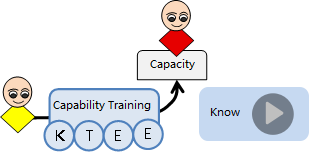|
|
| Successful Case
|
| Continental Automotive Electronics |
| Bosch Automotive Electronics |
| Schaeffler electric drive |
| Joyson Automotive Electronics |
| Huawei Technical Center |
| BMW Automotive Research and Development Center |
| Geely Auto Research Institute |
| Byd Automotive Research Institute |
| |
|
|
|
|
|
|
| Courses > Modeling |
|
 |
|
UML2.4 Specification and Application
|
Views 
|
|
 |
|
| Zu Tao
|
| Founded uml.org.cn in 2001, 2005 IBM Rational User Group Best Speaker |
| |
|
|
| Time Location: Beijing, Shenzhen and Shanghai open classes based on registration |
| Course CostпЉЪ800 $/Person
|
|
|
|
| Internal Training: You can customize internal training according to the needs of the enterprise. |
|
 |
Authentication Method:
Understand the competency Model before training.
Ability evaluation after training:
Online Examination
Ability Analysis, give learning suggestions
The qualified person shall be issued a certificate as proof of vocational skill qualification
|
 |
|
|
If you have a basic understanding of UML and have made some applications, but it is difficult to accurately express the semantics of requirements and design, it is recommended that you have a comprehensive understanding of UML2.4.1 specification through this course. This course tries to focus on UML specification and elaborate UML specification from the perspective of UML application, so that you can accurately and efficiently model requirements, analysis and design. Through this course, you can:
- Use UML2.4 for accurate and efficient requirements modeling
- Use UML2.4 for accurate and efficient design modeling
- Use UML2.4 for accurate and efficient implementation modeling
In the course: You will also have a clear understanding of the following
- Learn about OMG modeling and metadata specifications
- Understand the UML2.4 specification
- Understand the UML2.4 basic specification
- Understand the UML2.4 superstructure
- Learn about supplemental structures and definitions
|
| Training Goal |
- Overview of Model-based design
- Model-based design knowledge preparation
- Forward design based on model
- Model based requirements analysis
- Domain analysis based on model
- Model based architecture design
- Detailed design based on model
- Design verification based on model
- Transition from model-based design to code
- Refactoring based on model
- Why do I need a model when refactoring
- How do I model code backwards
- How to find problems and refactor designs based on models
- Introduction to tools based on code reverse model
- Four - dimensional management based on model
This course will be combined with a real project case, will be combined with a complete real project case, from requirements analysis to design, to explain how to practice model-based design. |
| Training Target: Intermediate and senior programmers, system analysts, requirements researchers, architecture designers, product marketing technicians |
| Student Foundation: General UML application experience, software project requirements or analysis design experience |
| Teaching Method:
Customized Course + Case Explanation + Group Discussion, 60% Case Explanation, 40% practice exercise |
| Training Content: 2 Days
|
- Problems in UML Modeling: Difficult to express precisely, do not know how to express
- How to use UML2.4 for efficient, accurate and concise requirements and design modeling
- Introduction to UML2.4
- Changes in UML2.4 compared to the previous
- UML2.4 language architecture
- UML2.4 language form
- OMG Modeling and Metadata specification introduction
- Common Warehouse Meta-Model (CWM)
- Meta-object Facility (MOF)
- Model level testing and debugging
- MOF model to text transformation information language
- Object Constraint Language (OCL)
- Reusable Asset Specification (RAS)
- Software Process Definition Metamodel (SPEM)
- Unified Modeling Language (UML)
- UML2.4 Infrastructure library
- UML2.4 kernel, how to model requirements and design based on the kernel
- UML2.4 Structure, how to conduct structural modeling of requirements and design based on structure
- UML2.4 Behavior, how to conduct behavioral modeling of requirements and design based on behavior
- UML2.4 Supplementary Structure and Definition, how to apply supplementary structure refinement mode
- UML2.4 Application examples, case practice
|
|
| |
|
|
|
|
|
| Consulting Objective
|
Help build model-driven analysis, design, development, testing |
| Scope Consultation |
Requirements Modeling, Architecture Modeling, Database Modeling, Code Modeling, Test Modeling.
|
| Consultation Method |
Model-driven development process training, modeling and management tool environment construction, combined with actual customer case demonstration, team practice guidance, model evaluation standards formulation, specification formulation |
| Successful Case |
Huawei Research and Development Center, Space Center of Chinese Academy of Sciences, Nanjing 14 Institute, China Mobile Research Institute and so on. |
| For more information:010-62670969пЉМ umlooo@hotmail.com
|
|
|
|
|